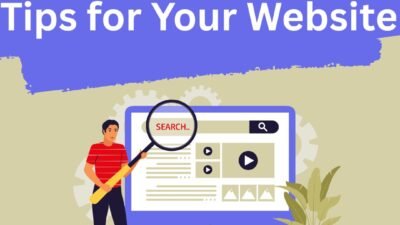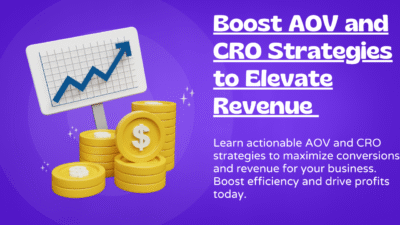If you are looking to get more leads for a newsletter, sell product or nip anywhere in between; landing page optimization can greatly increase your chances of success. Regardless of whether or not the landing page is already in existence and just needs some changes made to it.
Key Elements of a High-Performing Landing Page
Clarity in Headlines
The headlines should be grabbed at a single glance, so your prospects of successful first impression are greatly enhanced. Clarity in headlines The headline should be specific to what they are looking for. It can not only be general information about your topic, but also convey benefits to your audience.
Example:
Rather than use an unnamed headline such as “Digital Marketing Tools,” it would be better to use the following: “The Only Marketing Tool You Need to Increase ROI by 30%.”
Top Tip:
Always thoroughly study your market. A headline that really speaks to their unique pain-points is an effective way to keep visitors engaged on the page.
Strong Images
Images, videos and other visual content will help make your page more engaging. But avoid over-cluttering your landing page with visual elements that detract from the message when it is necessary to do something (like submit an email form). High-quality images which are relevant to and support your message, or a short explainer video, can be very successful in engendering trust and building up your credibility with site visitors.
Effective CTA (Call to Action)
Effective use of your CTA is crucial in determining the success or failure of your business. Taking out an ad? Be sure to present it prominently and keep using verbs which are active like “Develop your own story” or “Get used to commanding others”. Even when your offer is good enough for the reader to take immediate action, he won’t accept it unless you call him to do so.
Tip:
A/B test your CTA placement and wording to see which brings the best results.
Trust Signals are Key
Trust is the essential precondition for converting visitors to leads of sales or leasing customers. Adding user reviews, testimonials and trust badges to your website can help to bring visitors confidence it is safe to do business with you. A message like “Boasts 4.8/5 Rated 10,000 users” is one example.
Simple Clean Design
Complex design on landing pages may cause confusion and contribute to a high bounce rate. Keep it simple: spare no pains in doing away with all distractions, use plenty of space, divide your content into easy-to-digest sections, pay close attention to order.
Landing Page Optimization Steps
Step 1. Know Your Audience
Conversion rate optimization begins with an in-depth understanding of your audience. Conduct surveys, analyze customer behaviour and create detailed buyer personas in order to ascertain their wants and challenges. Once you know who your prospects actually are, tailor all elements on the landing page so as to fall in line with their wishes.
Example:
Busy professionals, for instance, appreciate time-saving. Make this a prominent feature of your landing page–in the headline, as well as subheads and all through copy.
Step 2. Optimize for Speed
Research has shown that for every second a page takes to load, you can expect to lose 7% of conversions-decreasing your return on investment by a staggering amount over time. Visitors are impatient in general about slow loading pages, so make sure your landing page has an average load time of less than three seconds.
Hints for speeding up include:
(List missing from original post)
Step 5: A/B Testing
Don’t think that your landing page is perfect right out of the gate It’s just a start! Use a so-called ‘A/B’ test to compare different elements of your page, from the colors of your buttons to the text in headlines. Tools such as Google Optimize, Optimizely, and Unbounce make this easier than ever.
Things to Put to the Test:
-
Copywriting (headline, CTA text)
-
Visuals (images versus videos, placement of elements)
-
Page layout
-
Form length (e.g., number of input fields)
Step 6: Analysis and Changes
There are several different analytics tools that can be used to monitor a landing page’s performance. Metrics to watch carefully include bounce rate (the number of users who left immediately), conversion rate, and time spent on the site. If a certain section of your landing page has a high exit rate, then it might be in need of revision.
Sticking to the suggestions of these guidelines, make corrections to your content, visuals, and offers every now and then- even adding fresh features is a good idea.
Common Mistakes to Avoid
-
“Dumping Information” and “Piling it up”: Keep your content concise. Use bullet points and short paragraphs to quickly and clearly get across what ought to be told simply.
-
Weak Calls To Action Are Offensive Passives: Phrases like “Click Here”, she said. They are too vague. Why bother talking in a passive voice? Opt instead for action-driven directions that tie in with the user’s whims.
-
Accessibility: Don’t Forget! You Need It Improved. For good visibility, make text high-contrast and ensure that your site can be navigated with just the keyboard (for those users who are disabled).
-
Ignoring Social Proof: Trustworthy and Refined Help. Use other people’s good experience to build trust. Make sure to avoid adding too much effort with testimonials, guest posts, or awards.
Master Landing Page Optimization
SEO is important, but without great landing pages it won’t help! A successful landing page, beautifully optimised for the specific audience to which you are writing it, can be an incredibly effective instrument in order to realise your business goals
And once more to improve the performance of your landing page.





